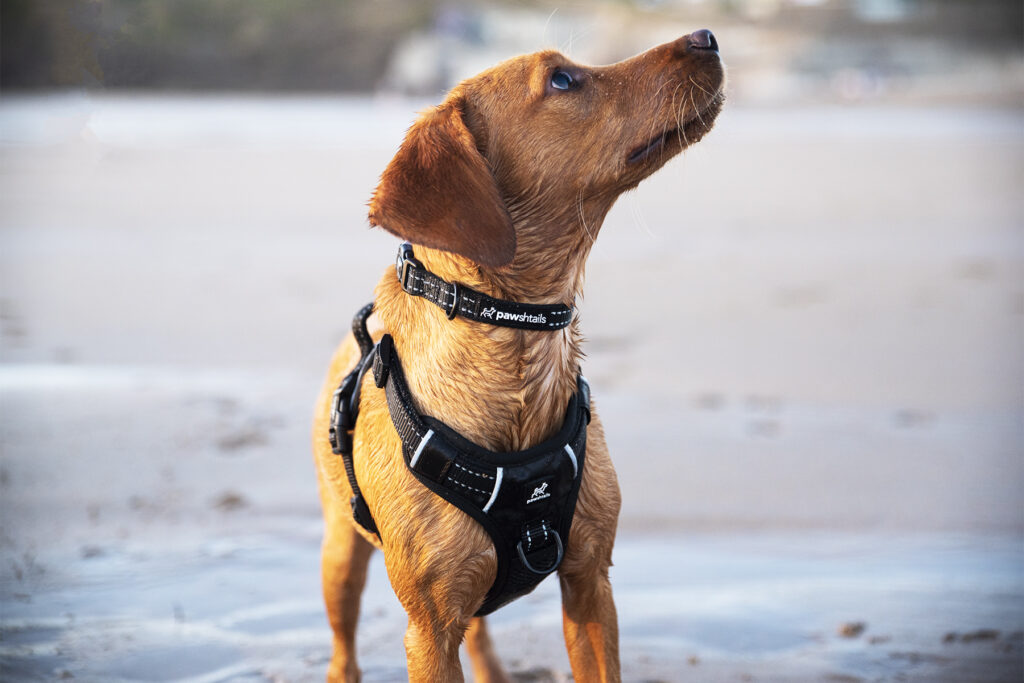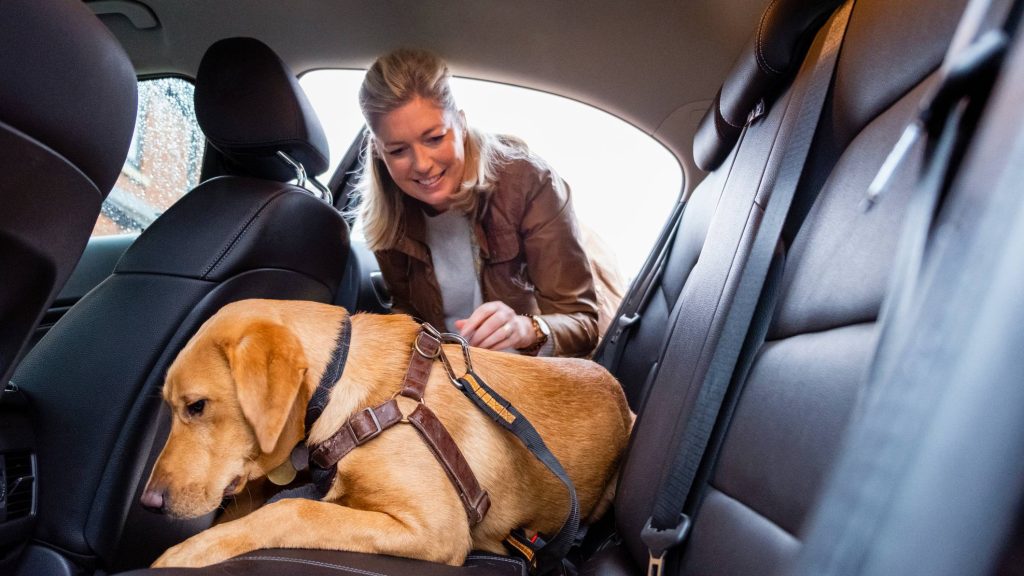When it comes to taking your furry friend for a walk, ensuring their comfort, safety, and control is extremely important. That’s where a dog harness comes into play. Unlike traditional collars, harnesses offer a range of benefits that make them a popular choice among dog owners. However, with a variety of options available, choosing the right one can feel overwhelming. That is why we are going to share several useful tips on which key factors to consider so that you find an appropriate and resilient pet harness for your pooch.
Types of Harnesses

There are several types of dog harnesses available with multiple variations, each designed to serve different purposes and cater to various needs. Some of the most common contenders include:
• Back clip: This type has a ring on the back allowing easy attachment to the leash. It’s comfortable, easy to put on and doesn’t restrict movement. If your pup doesn’t pull excessively and has good leash manners, invest in a quality pet harness with a back clip.
• Front clip: It consists of a ring on the chest area that redirects the pulling force towards the side. This is a beneficial tool for enhancing control, and discouraging pulling, and is mostly recommended for dogs that require additional guidance.
• Dual clip: This harness features both front and back attachment points. It offers the versatility of being able to attach the leash to either the front or back, depending on your pet’s specific needs and walking style. It can be beneficial for training or when dealing with dogs with varying walking behaviours.
• No pull: Designed specifically for dogs that pull the leash excessively, no-pull harnesses usually have a front attachment point and additional features to discourage pulling. These mechanisms typically include a chest strap that gently tightens when the dog pulls, preventing forward movement and causing them to stop. Some people dislike this type of restraint since it can cause anxiety and may increase the pup’s frustration. That said, consider your furry friend’s needs before purchasing one.
• Step-in: This one can be easily put on and taken off because it has two openings. As the name suggests, the harness is designed for your pup to step into it with the front legs and then have it fastened around their torso. If your pooch dislikes straps tightened around their neck, this is a good option.
• Vest Style: As the name suggests, this harness is designed in the shape of a vest and covers a bigger portion of your pup’s torso by providing additional support. It’s perfect for smaller breeds, well-behaved dogs, pooches with health conditions and those who need extra stability. Made out of more durable materials and with extra padding, this restraint is typically more expensive.
• Car Safety Harness: If you like to travel with your canine companion, a type of restraint specifically designed for cars is a must. This pet harness is designed to secure your pet safely in a vehicle by attaching a seat belt loop to the car’s seat belt, ensuring safety, and minimizing distractions for the driver.
Key Considerations
Before you purchase any of the above-mentioned types and styles, it is essential to carefully consider factors such as the size of your four-legged companion, your pet’s temperament, and the product’s durability, style, and cost.
Size And Fit
Selecting the appropriate size is crucial for supporting healthy growth and development, as an improperly sized one can cause posture issues with puppies and adults. Before you go to the pet shop, measure your pet with a soft measuring tape. You should measure the chest, just behind the legs and refer to the manufacturer’s size guide to choose the ideal size. To ensure proper strap fit, use the two-finger method. Place two fingers between the tape measure and your pet’s skin for a snug, comfortable fit.
For bigger breeds, choose a durable option with adjustable straps and secure closures. For smaller breeds, opt for one that is properly fitted to their body. Make sure it’s not too tight as it can cause breathing difficulties and if it’s too loose the puppy may accidently slip out.
Material and Durability
The ideal material for a harness is durable, strong, and comfortable for your pooch. Some popular options include nylon, polyester, and neoprene. These fabrics are quite sought-after thanks to their strength, flexibility, and resistance to wear and tear. Additionally, they are often lightweight and easy to clean, which means they’re incredibly practical in the modern world.
Cost
Considering the cost is an important factor when making a purchase decision. While it’s natural to look for affordable options, it’s crucial to strike a balance between cost and quality. Cheaper options may not always offer the same level of durability, comfort, or functionality as higher-quality ones.
Investing in one that is well-made and lasts longer can save you money in the long run, as you won’t have to replace it as frequently. It’s advisable to research different brands, read reviews, and compare prices to make an informed decision that fits within your budget.
Comfort and Adjustability
You should prioritize comfort and adjustability when buying a harness. Look for ones that are comfortable for your puppy to wear. For example, buy options that have padding and breathable materials, so they won’t cause irritation on your pup’s skin. Additionally, the design shouldn’t be too complicated to put on and take off, and make sure it doesn’t restrict your furry companion’s movement. Moreover, invest in a model with adjustable straps so you can customize the fit as your pooch grows.
Dog’s Temperament and Needs
It’s important to assess your dog’s behaviour, energy level, and any specific training needs they may have to find the most suitable option that aligns with their lifestyle. Also, it’s essential to understand and consider your dog’s temperament.
For example, if your dog is anxious or fearful, a design that provides a secure and snug fit, without applying excessive pressure, may help them feel more secure and less stressed during walks. On the other hand, if your pet is highly energetic or tends to be aggressive, a sturdy and durable option that offers good control and prevents escape may be more appropriate.
Helping Your Dog Adjust

To create a positive association with the harness, start by offering treats through the hole for the head. Let them hear the clips to ensure they’re comfortable with the sound.
Place it over their head, reward them with treats, and secure the clips. Encourage them to engage in activities while wearing it, like playing games or training. Finally, take them for a walk and provide occasional treats for added motivation. This process will help your pooch adjust more easily.
Final Thoughts
In conclusion, when selecting a harness, it’s crucial to consider several factors that will accommodate your pup’s needs. Paying attention to size, durability, material, cost, adjustability, and fit is essential. Also, creating a positive association from the start will help your pooch adjust more easily. By carefully considering these aspects and choosing a high-quality option, you can ensure the well-being, comfort, and safety of your beloved furry friend.


























